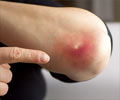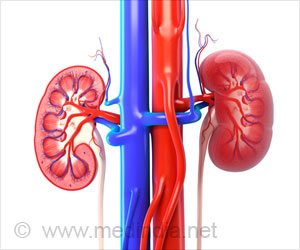For treating genital gonorrhea, antibiotic gentamicin with azithromycin worked almost as well as the currently used ceftriaxone.

‘Genome sequencing could help identify genetic markers of gonorrhoea resistance and provide insights into the mechanisms and predictors of resistance. ’





The study, funded by the National Institute for Health Research (NIHR), published in The Lancet and is the first randomised controlled trial to compare the two treatments for the sexually transmitted infection amid concerns of growing resistance to ceftriaxone. Public Health England (PHE) recently reported that it was investigating two cases of gonorrhoea in two women with similar resistance patterns to the antibiotics ceftriaxone and azithromycin, which are used as the first line treatment.
One of these cases appears to have been contracted in Europe and the other has links to Europe but was acquired in the UK. A case of resistant gonorrhoea was contracted in South East Asia by a UK national in 2018. This was a different type of resistance and unrelated.
Professor Jonathan Ross, chief investigator of the Birmingham trial, said: "Our current antibiotic treatment for gonorrhoea is beginning to fail and experience with previous drugs strongly suggests that this could become a widespread problem. Our trial has found that gentamicin combined with azithromycin works almost as well as ceftriaxone with azithromycin for genital gonorrhoea, but did not clear throat or rectal gonorrhoea as effectively.
"We believe ceftriaxone should remain the first line treatment for gonorrhoea, with gentamicin as an alternative particularly for patients with genital infection, and those who are allergic or intolerant to ceftriaxone. But further research is required to identify and test new alternatives to ceftriaxone for the treatment of gonorrhoea."
Advertisement
Overall 98% of participants given ceftriaxone had their gonorrhoea cured, compared to 91% given gentamicin, a difference of 7%. Therefore, it is likely that doctors will continue to use ceftriaxone (plus azithromycin) as their preferred treatment. Gentamicin did have a cure rate of 94% for genital gonorrhoea and so it might be useful when ceftriaxone is not available, or inappropriate to use.
Advertisement
If treated early gonorrhoea is unlikely to lead to any complications or long-term problems. However, without treatment, it can spread to other parts of the body and cause serious health issues.
In women, the infection can spread to the reproductive organs and cause pelvic inflammatory disease (PID). This is estimated to occur in 10 to 20 per cent of cases of untreated gonorrhoea. PID can lead to long-term pelvic pain, ectopic pregnancy and infertility.
During pregnancy, the condition can cause miscarriage, premature labour and the baby being born with conjunctivitis. If the baby is not promptly treated with antibiotics, there's a risk of progressive damage to vision. In men, gonorrhoea can cause a painful infection in the testicles and prostate gland.
Professor Hywel Williams, Director of the NIHR's Health Technology Assessment Programme, which funded the study, said: "It's very worrying that cases of treatment resistant gonorrhoea are now appearing across the globe. This research provides important new evidence that suggests that gentamicin with azithromycin could become a second-line treatment for patients who are resistant to ceftriaxone with this infectious disease.
"The NIHR is committed to research in areas of greatest health need, such as antimicrobial resistance. This research is one of a number of studies we've funded over the last few years in this vital area, in our sustained effort to tackle this worldwide threat."
The researchers say further research into developing a preventative or therapeutic vaccine is crucial due to increasing resistance and limited future antibiotic options. They say a greater understanding of the immune response to infection is needed to develop this and that collection of samples in the trial will help with this future research. Exploring how frequently multiple infections occur and their potential role in the spread of resistance is also important.
Source-Eurekalert















